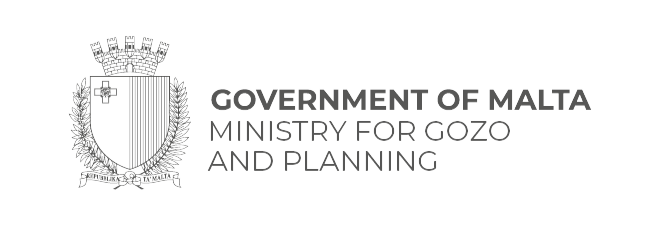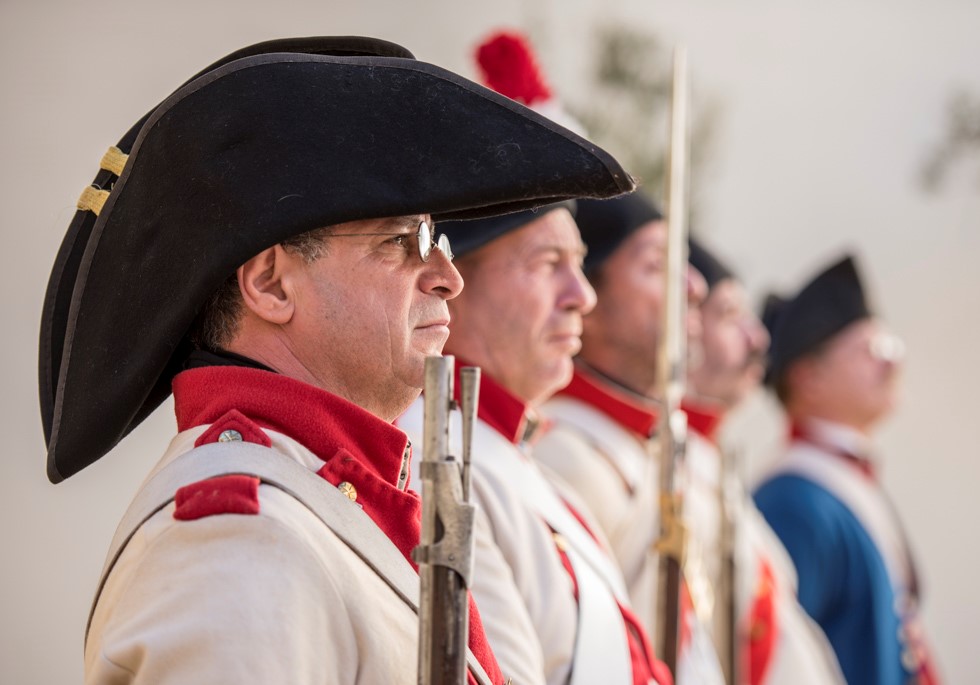
For a small island – Gozo has a unique, diverse and rich history. Its distinctive 7,000 year timeline is as you’d expect interwoven with that of her sister island, Malta. The island’s geographical positioning in the Maltese archipelago, set in the heart of the Mediterranean, shaped Gozo’s history, as different rulers vied for its strategic location.

Gozo’s history is a rich tapestry; involving invasions by the Phoenicians, the Romans, the Byzantines, the Arabs, the Normans, the Saracens, the French and many more. All these assaults and further occupations left an imprint on the culture of our people and on the island’s landmarks.
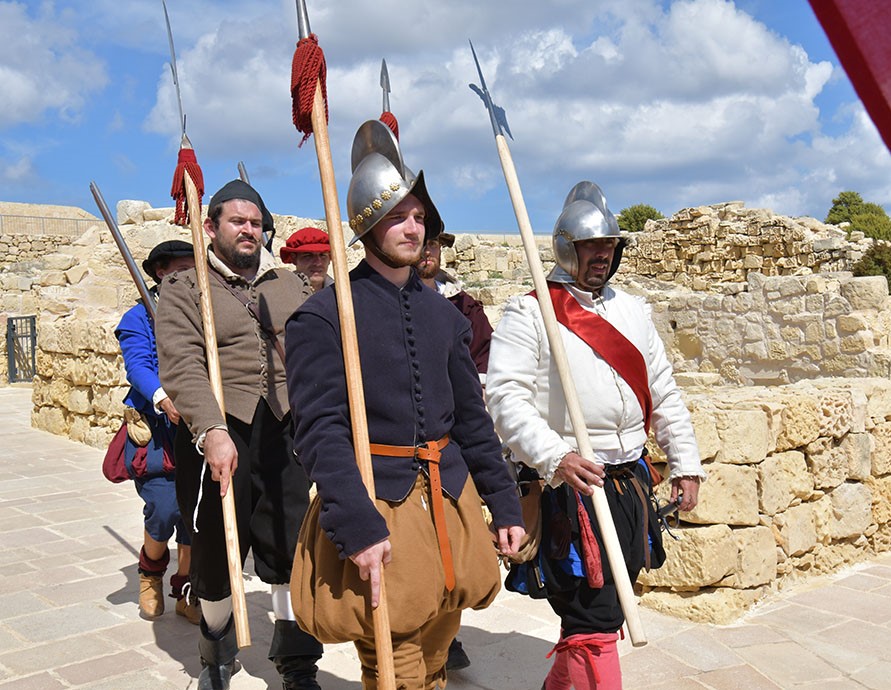
In fact, “Għawdex” which is the name locals use to refer to Gozo, actually originates around 870 AD when Gozo was under Arab rule. More recently, over the past 250 years our people have had their resolve tested further; overcoming a deadly plague and experiencing hunger and attacks as a consequence of Malta’s role in the Crimean, the Great War and the Second World War – whilst also rising up in their own monumental battle to assert their independence from British rule.
It’s no surprise then that our islanders are proud of their distinct history and enjoy celebrating this through dramatic productions to showcase this heritage; striving to keep their past struggles current and relevant; taking it from the dusty page to the open-air stage.
For 10 years, the Xagħra Historical Re-enactment Organisation have been dramatising historical reconstructions, honouring key dates in Gozo and Malta’s history and sharing lesser-known stories of past Xaghra villagers linked to these historical moments.
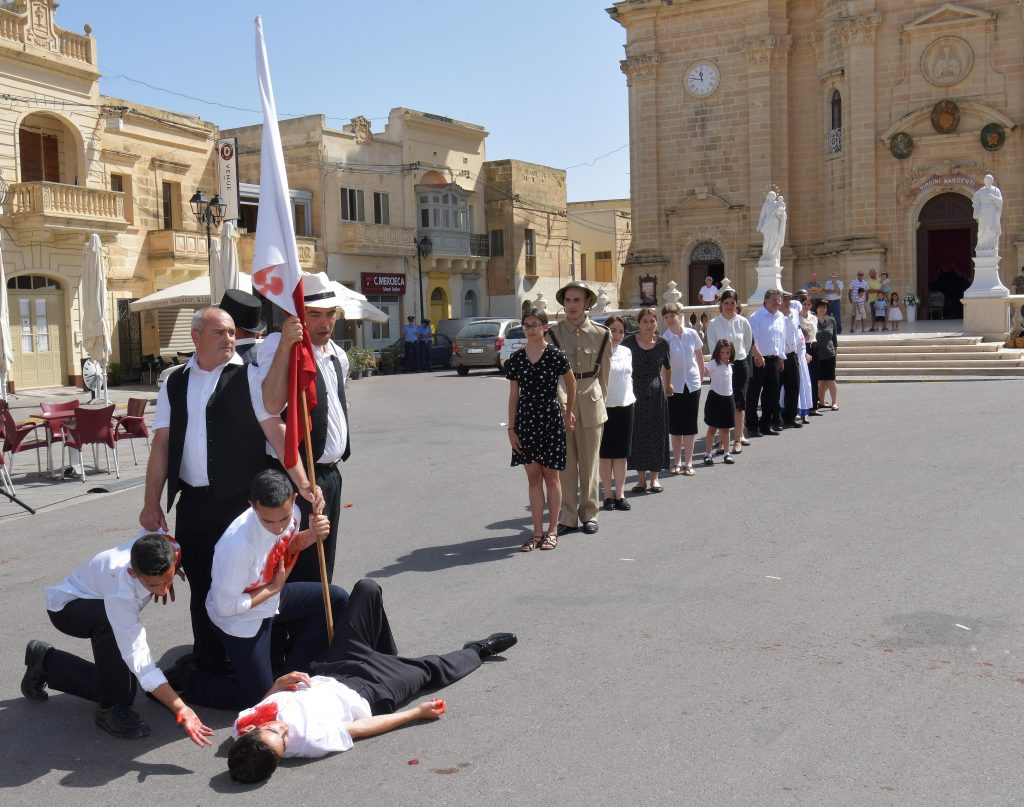
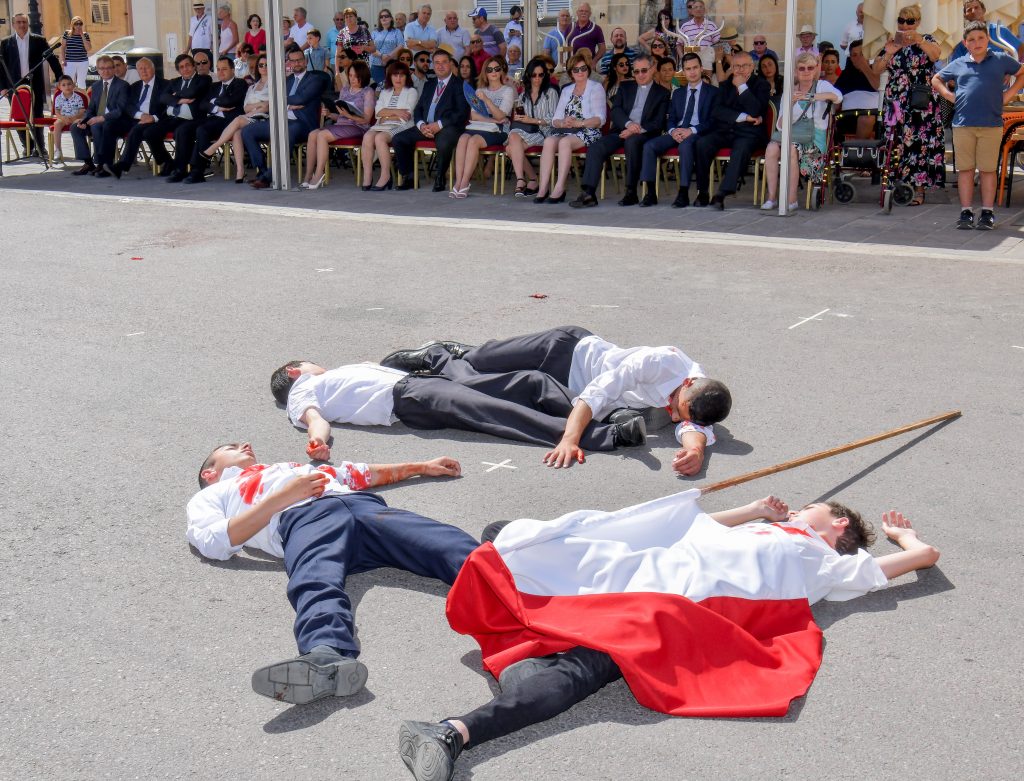
In June this year, their actors took part in a moving re-enactment to mark the 100 year anniversary of the Sette Giugno tragedy of 7 June 1919, when four people died during rioting as Maltese people revolted against the British administration to demand some form of representative government. One of the victims who died during these riots was from Xagħra, Guzeppi Bajada.
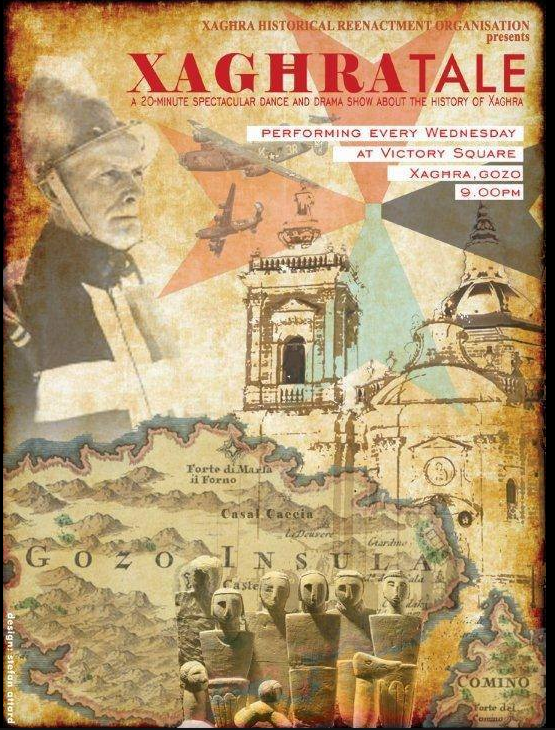
Xagħra Historical Re-enactment Organisation stage regular productions throughout the year and are currently mid-way through their summer-run of ‘Xaghra Tale’. Xagħra Tale is a highly polished 25- minute dance and drama production, aimed at tourists and performed each Wednesday night at 9.00 pm in Xagħra Square (from July up until 21st August, 2019).
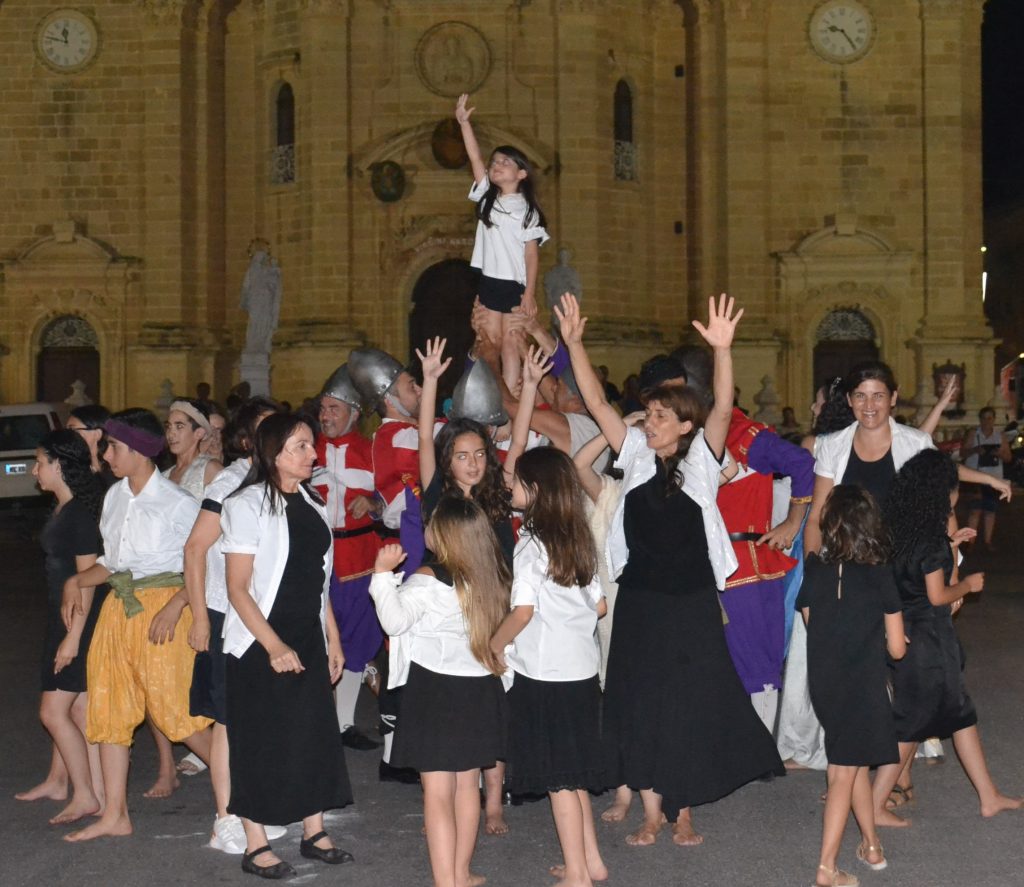
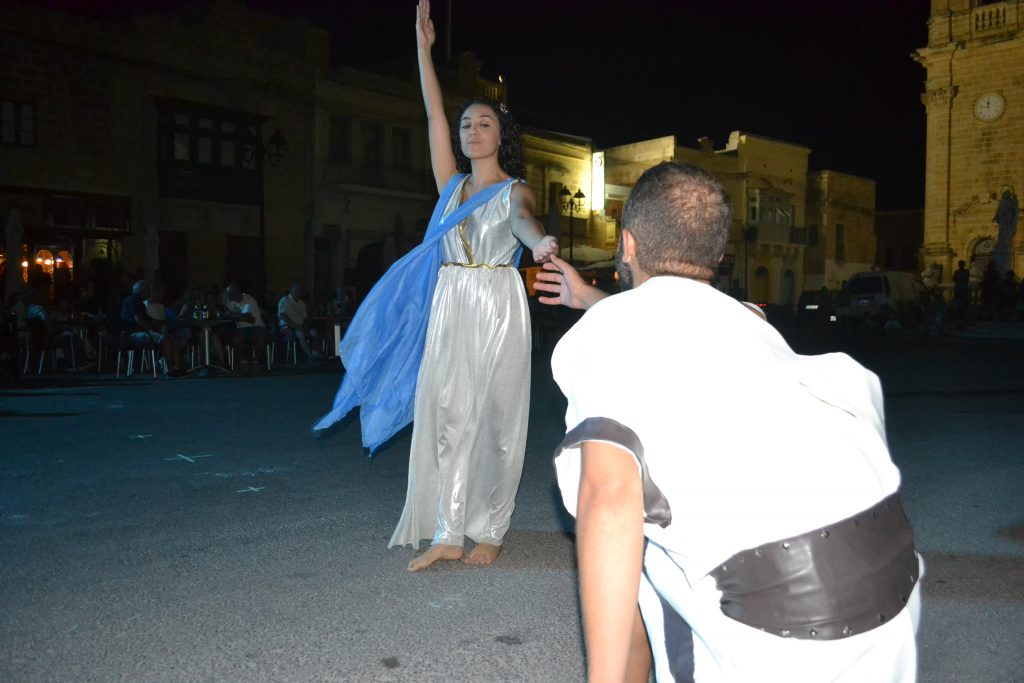
This narrated production, under the guidance of Artistic Director Father Joseph Bajada, features 50 to 60 local performers and charts the story of Xagħra through pivotal moments in its history, taking the audience on a millennial journey from classical times right up until the 20th century. How often will you find a holiday destination where a whole village will put on an elaborately staged, fully choreographed drama and dance production for you?
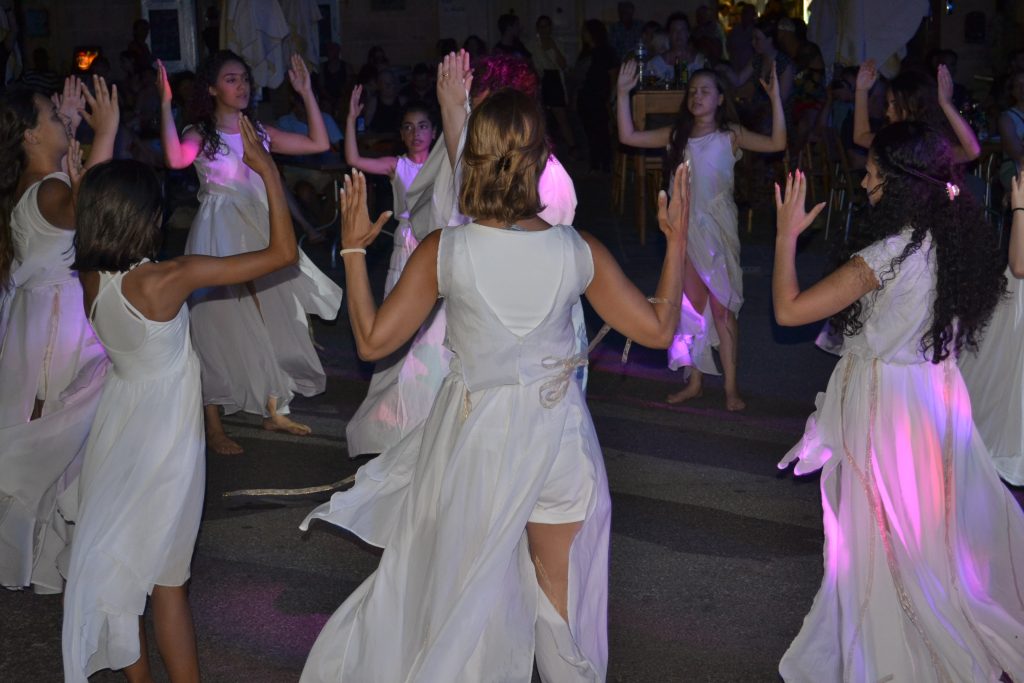
Xagħra Tale began 6 years ago and runs each year, although the production took a break last year and so this is currently their 5th edition. The group have three versions of Xagħra Tale centering on different events in history, which are rotated annually to ensure it stays fresh for the audience and the performers.

Victor Teuma is the Founder/President of the group and says: “Our 2019 version really is a whistle-stop tour of our history, cramming hundreds of years into 20 to 25 minutes. It begins with the story of our Ġgantija Temples, Malta passing from Aragonese rule through to the Knights of St John, the Great Siege of Malta in 1565. We pull at the heart strings, telling the little-known tale of the Black Plague in Xagħra, even some locals are unaware of how Xagħra was Gozo’s only infected village which was cordoned off by the army with many locals dying. Then we move onto how the Second World War impacted Malta and Gozo.”


This year’s youngest performer is a 5 year old boy, who plays a dead child in the black plague sequence and their oldest is a 70 year old gentleman who takes on the role of Sir Alexander Ball, a British admiral who came to the rescue of the Maltese people against Napoleon and who was the first Civil Commissioner of Malta.
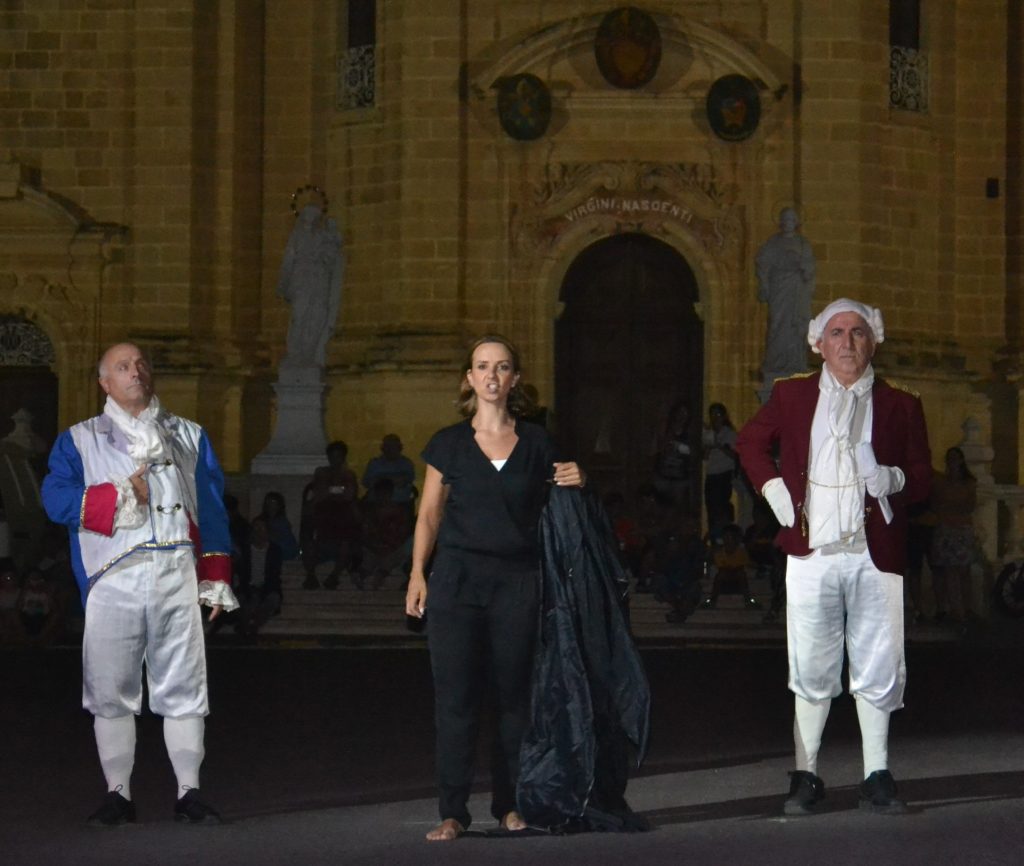
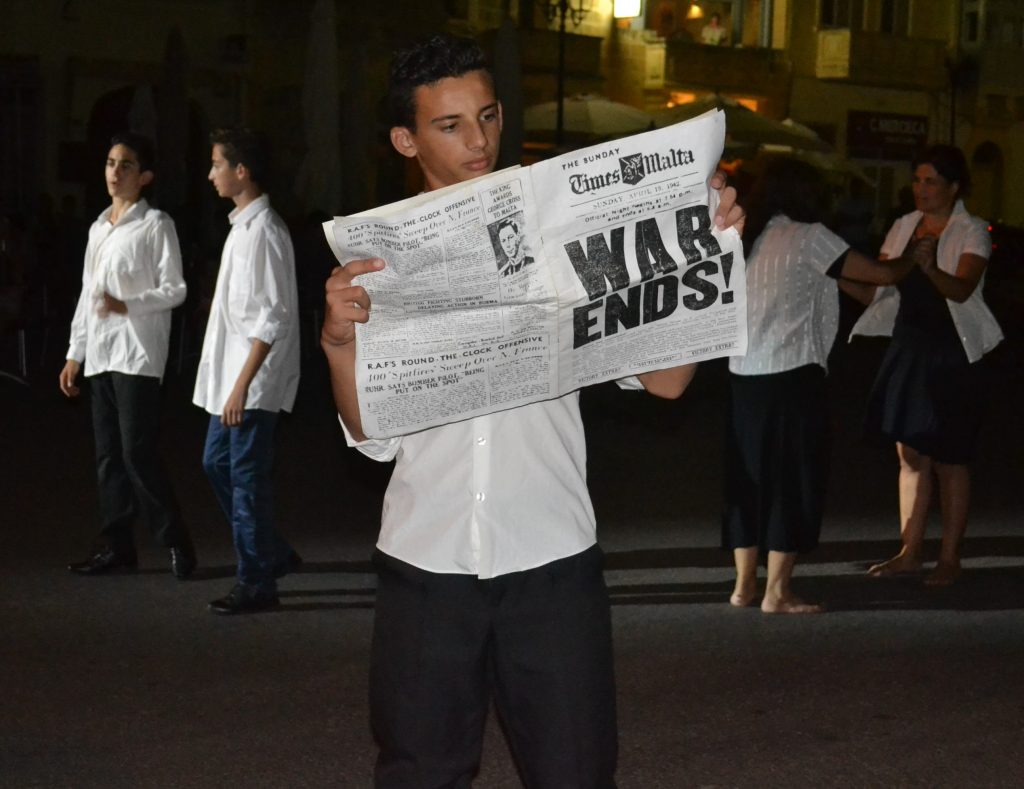
So, whatever kind of history you’re into there is something for everyone as this narrated production incorporates legends, military battles, world wars, joy and sadness and what’s more it is completely free. Younger performers collect donations from audience members after each production, with the money raised used to finance costumes and props.
Victor continues: “Although we focus on local history, we need to cover national history too; and where possible we try and illustrate with local stories. So, our scenes about the Second World War include sequences about air raids in Gozo, which mostly happened right here in Xagħra. It’s nice for local people to share their own history, giving local insight into historical events people can already relate to.”
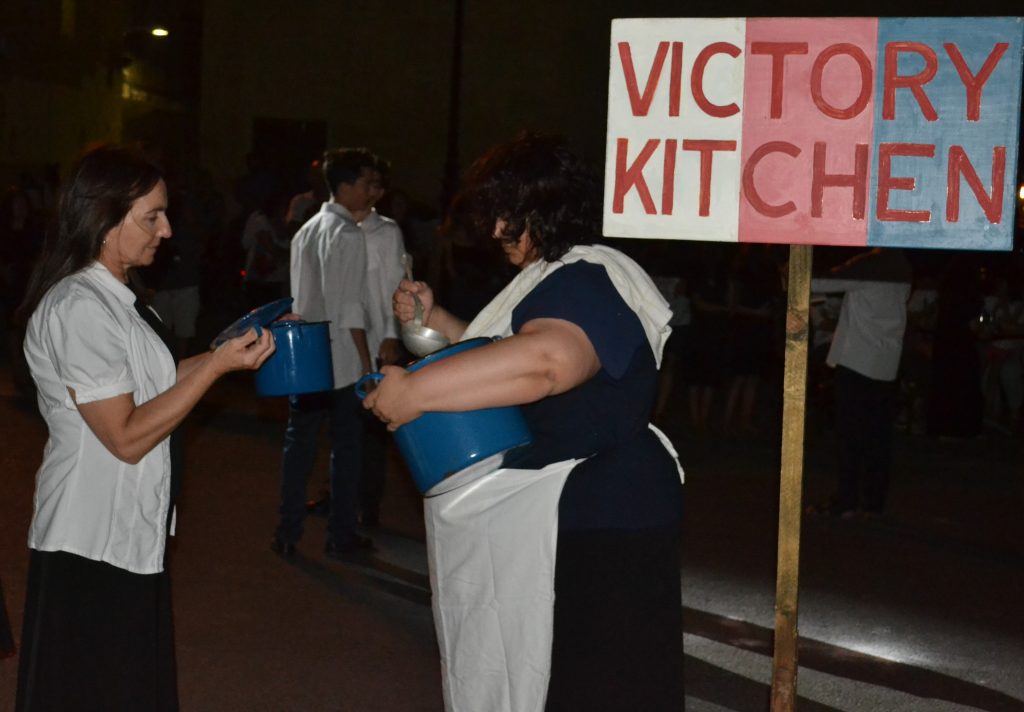
Xagħra Tale runs every Wednesday throughout August, with the final show taking place on 21st August.
The group’s next event after Xagħra Tale will be a commemorative Victory Parade to mark the Eve of Victory Day on 7th September and to kick start Xagħra’s feast – The Feast of Our Lady of Victories. Victory Day is a public holiday throughout the Maltese islands celebrated every September 8th, which marks the triumph of the Maltese over the Ottoman Empire in the Great Siege of 1565.
You can keep across future performances of Xaghra Historical Re-enactment Organisation here.
With thanks to: Victor Teuma, Noel Camilleri. Terry Camilleri, Anthony Vella and George Scerri.








